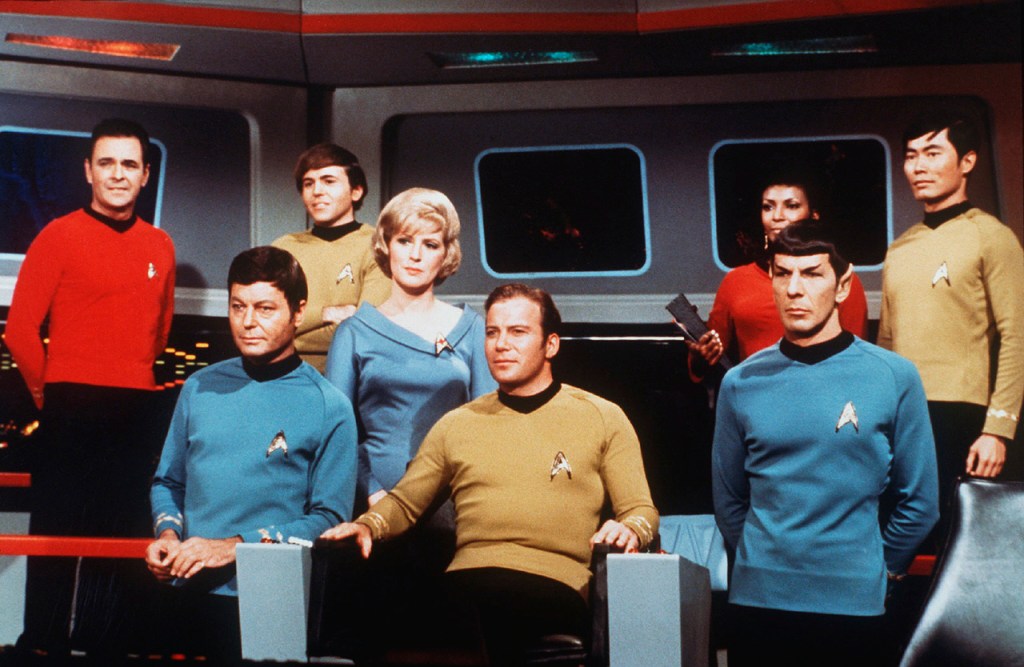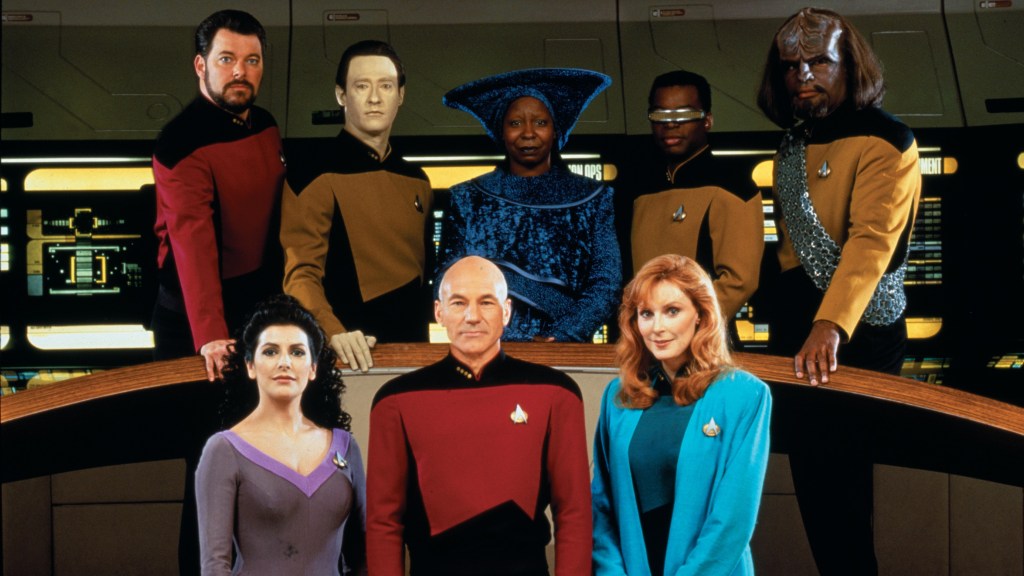
3. Enterprise (The Original Series)
I know, I know. The Original Series set the stage! Star Trek wouldn’t be Star Trek without Scotty and Uhura and Sulu and Chekov! While this is true, it’s also true that everyone who wasn’t in the central trio of Kirk, Spock, and McCoy never got much character development, even in films that purported to give them more to do. As director, Leonard Nimoy made a point of spreading the attention to his co-stars in Star Trek IV: The Voyage Home, but that attention still resulted in single bits: Scotty talking into a mouse, Chekov looks for nuclear ‘wessels,’ Sulu checks out a chopper.
However, the fact that the crew is so beloved despite their relatively small amount of screentime makes them all the more impressive. None of the side characters displace the main three, but Nichelle Nichols, James Doohan, Walter Koenig, and George Takei manage to make the most of the attention they get, so that they feel far more fleshed out than they actually are. Thanks to the supporting cast’s work, TOS set the stage for the crews to come.

2. Deep Space Nine (Deep Space Nine)
Deep Space Nine has a bit of an unfair advantage, as its central cast isn’t the crew of a starship; they’re the staff on a space station. That difference allows us to include barkeep Quark and constable Odo, characters that otherwise might not fit on the main crew. But the real secret to DS9‘s success comes down to its commander-turned-captain, Benjamin Sisko. From the very beginning, Sisko was a different type of character than the other leads, a single father who was skeptical of Starfleet and thrust into the position of religious figure.
Because of this distinction, Sisko was able to have different types of interactions with those around him, making for unique interactions with the crew. He saw Dax as both a subordinate and a mentor, thanks to the symbiote she carried. He bonded with O’Brien over feeling like an outsider, while he recognized Garak as a necessary evil. From the top down, DS9 offered new team dynamics, all part of its groundbreaking approach to the franchise.

1. Enterprise (The Next Generation)
The Original Series crew felt like a group of compelling characters who worked and lived together. The Next Generation crew was a a group of compelling characters who worked and lived together. Well, eventually they became that. Part of the problem in the famously uneven first two seasons of TNG is that it tries to replicate the focus on three characters—originally, Picard, Data, and Geordi. But as the series went on (and Stewart gave into playing along with his co-stars), the Enterprise-D became a proper ensemble.
Several episodes demonstrate these dynamics, from the delightful holodeck romps to the gripping two-parters. But none illustrate it better than the series finale, “All Good Things…” Watching Picard check in with the crew across time, only to finally join them in a card game at the end puts the perfect capper on the show. These are explorers and scientists and military personnel, yes. But most of all, these are friends.
